Paddleboard Lesson for Beginners - Part 4 - How to Get On a Paddleboard
So far in the Paddleboard Lesson for Beginners series, we've learned how to paddle forward and turn. Now we are going to learn how to get on a paddleboard. It might seem like an odd sequence of events, but there's a reason for this. These posts are structured around the same order of a typical SUP lesson. I start with the skills that can be practiced on land, such as the forward paddle stroke and turns. Plus you wouldn't want to learn how to get on a paddleboard without at least having a general idea of how to use your paddle to move your board.
How to Paddleboard Lesson Series - List of Posts
- How to Paddleboard Lesson Series - Part 1: Paddleboard Gear
- How to Paddleboard Lesson Series - Part 2: Paddleboard Stroke
- How to Paddleboard Lesson Series - Part 3: SUP Turns
- How to Paddleboard Lesson Series - Part 4: How to Get On Your Paddleboard - You're reading it now!
- How to Paddleboard Lesson Series - Part 5: How to Get Back on a Paddleboard After Falling
Safety First
Before I teach you how to get on a paddleboard, I want you to walk down to the shoreline or dock and have a look around. What's going on today? Are there swimmers, kids playing, or other watercraft in the water? Is the water calm or choppy? Are there strong winds or barely a breeze? All these factors should be considered before going out, as they can affect your overall experience and safety.

Make sure the water is deep enough for your fins before getting on board
Simple Steps for How to Get on Your Paddleboard
Once you are ready to go in the water, strap on your leash and carry or place your board in knee deep water. This will ensure that there's enough room for your fins to clear the bottom. Rest your paddle on your board across the nose. Then, get your hands flat on the deck. Bring one knee to one side of the carry handle and the other knee to the other side, so you are straddling the handle while kneeling. You can kneel upright or rest on your heels, whatever feels more comfortable. Now grab your paddle. We are going to start out paddling on our knees.

Climbing onboard my Waterwalker 126
Kneeling on a Paddleboard
The kneeling position is great for launching and docking, as it will keep you stable in the shallow water. It will also give you time to get your bearings. Kneeling is your go-to safety position; if at any point you are feeling shaky, tired, or find yourself in choppy or windy conditions, you can always kneel on your board.
Paddling Your SUP While Kneeling
Paddling forward on your knees is the same as doing it standing, but with one modification; you'll want to choke down on your paddle. This means taking your hand off the top handle and placing both hands further down the paddle's shaft. But other than that, the paddle stroke is the same. Reach forward, bury the blade in the water, bring it to your side, and then do it again. Practice on both sides, while headed towards deeper water, a bit further away from the shore or dock, in a quieter area.

It's so easy to paddle forward while on your knees. Holding your paddle further down the shaft will help.
Turning Your SUP While Kneeling
Now that you've found some deeper water, let's try your turns while still kneeling. This time, you can have one hand on your top handle which will help you extend the reach of your blade for better turns. Do the forward and backwards sweep on both sides. Take your time and focus on the mechanics. No need to rush your turn. A slowly executed but well done turn will be much more effective than a fast and sloppy one.
How to Stand on a Paddleboard
Once you're feeling confident about those kneeling forwards strokes and turns, it's time to stand. Again, make sure you are in deeper water. Get into a tabletop position, while keeping your paddle in your hands. Your knuckles and bent knees are resting on the deck. From here, step one foot to one side of the carry handle, and then do the same with the other foot. Then, bring yourself up to standing, while holding the paddle. You can have a slight bend in the knees to help with balance. As soon as you're standing, try taking a forward stroke. And look at that; you're standup paddleboarding!

To go from crouching to standing, take it one foot at a time
It might take a few tries but be patient with yourself. Most people will feel shaky in their legs on the first few tries, and might go back to kneeling before trying again. This is ok! Be patient with yourself and give it another shot. Don't worry too much about technique at this point. Try to relax and breathe as you stand and paddle.
The Upright Stance on a Paddleboard
Once you feel a bit more confident standing on your paddleboard, you can adjust your stance. First, take a look at your feet. They should be about hip-to-shoulder width apart, with your feet parallel and facing forward, each foot equal distance from the carry handle. Next, check in with your knees. Don't lock them or bend them too much. A nice, easy microbend will help you with your balance. Now take a deep breath in then exhale; open up your chest and relax your shoulders. We tend to tighten up or hold our breath when we are nervous. Finally, get those eyes up and look forward. It's important to always see what is going on around you and where you are headed. Look where you want to go, not where you don't want to go. Now that you are more relaxed, practice your standing forward stroke and paddleboard turns.

Standing up on your board is the best!
Don't Give Up!
Learning how to get on a paddleboard sounds simple but can be intimidating at first. Take your time and don't give up. In my years of teaching, I've never met someone I couldn't get to stand. As long as you have the right board for you and calm conditions, this can be acheivable. Once you start to paddle standing and see how cool things look while seemingly walking on the water (hence the name of our flagship board!), you'll wonder why you didn't try this before. Keep practicing and soon enough, it will become second nature. And if you fall, no big deal. In our final instalment of Paddleboard Lesson for Beginners, we'll be learning how to get back onto a paddleboard after falling.
Bonus Tips
Now that you're super comfortable standing, it's time to try a handstand. Just kidding! If you'd like an extra challenge, why not incorporate a bit of yoga into your SUP skills. Go for a downward dog (such a nice stretch on a board) or try a one footed standing position. How long can you balance on one foot? Let us know in the comments below.


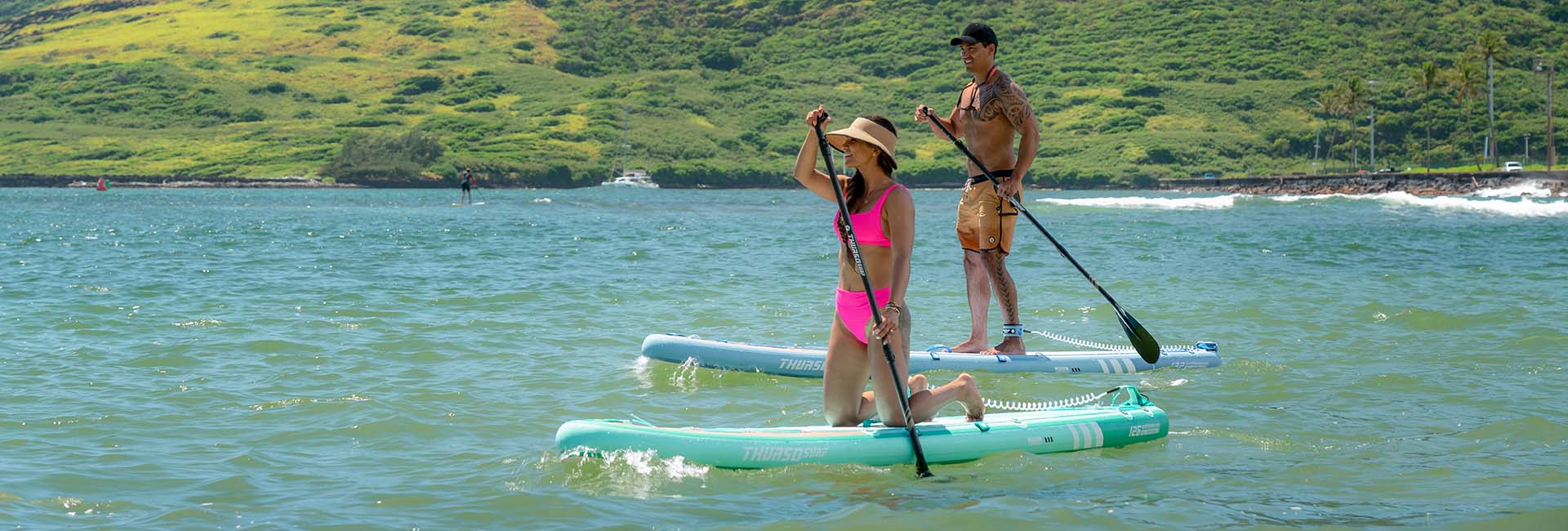
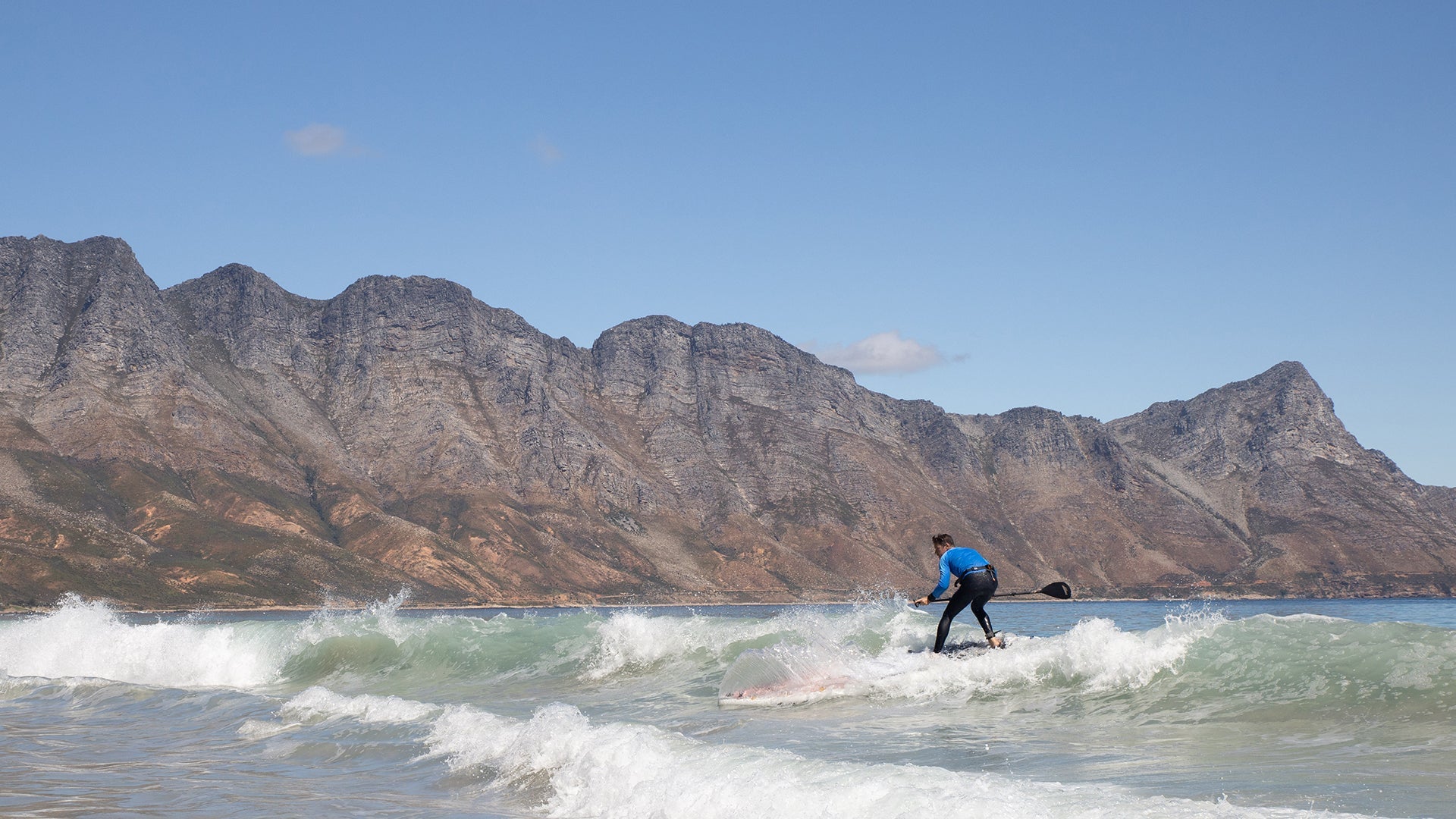
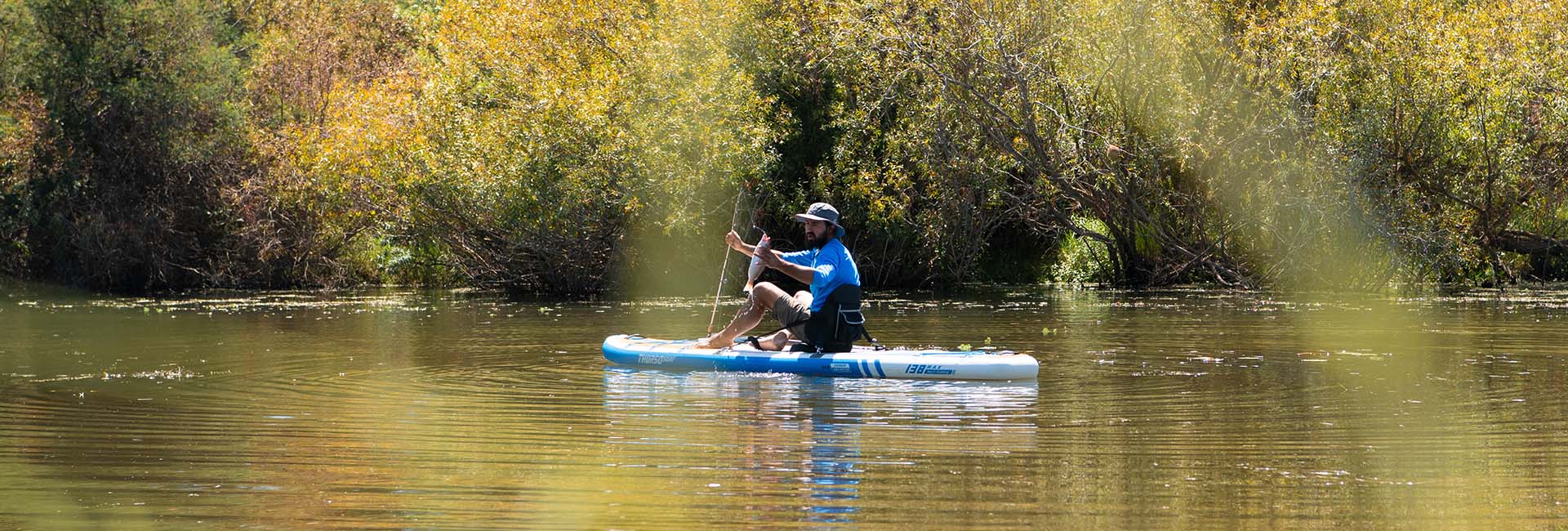
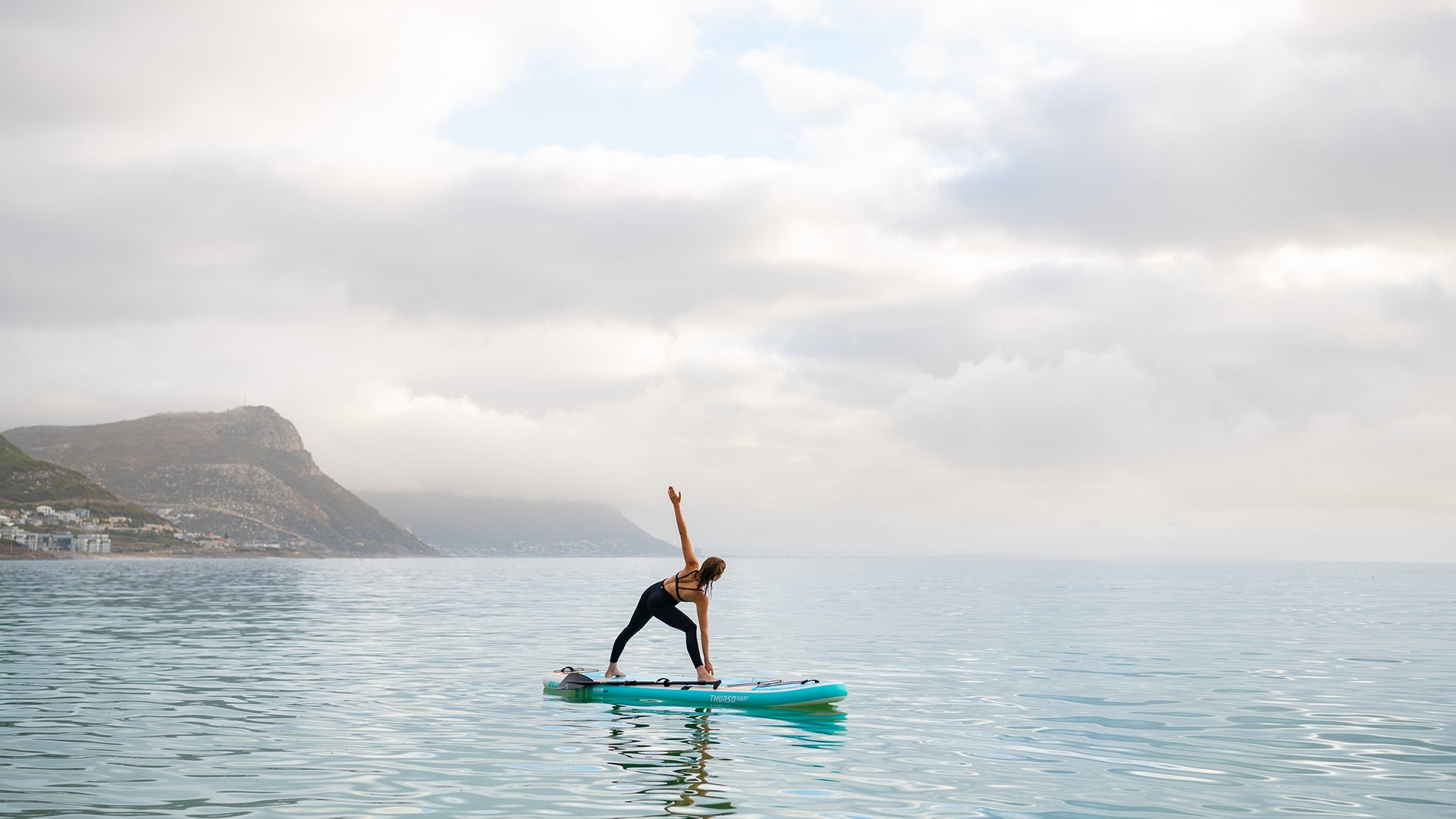
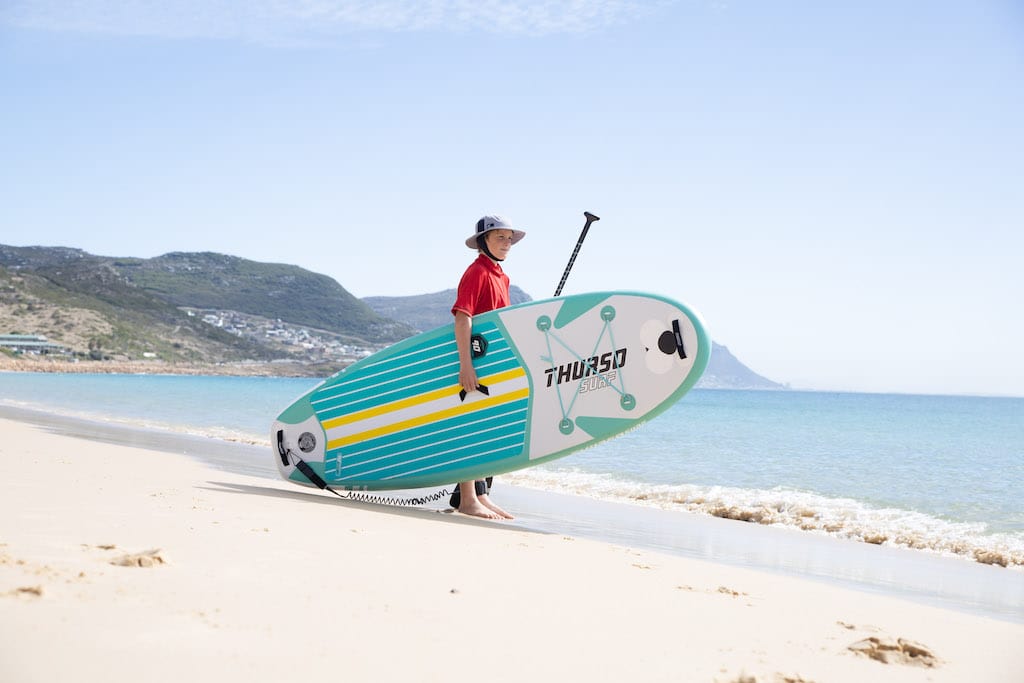
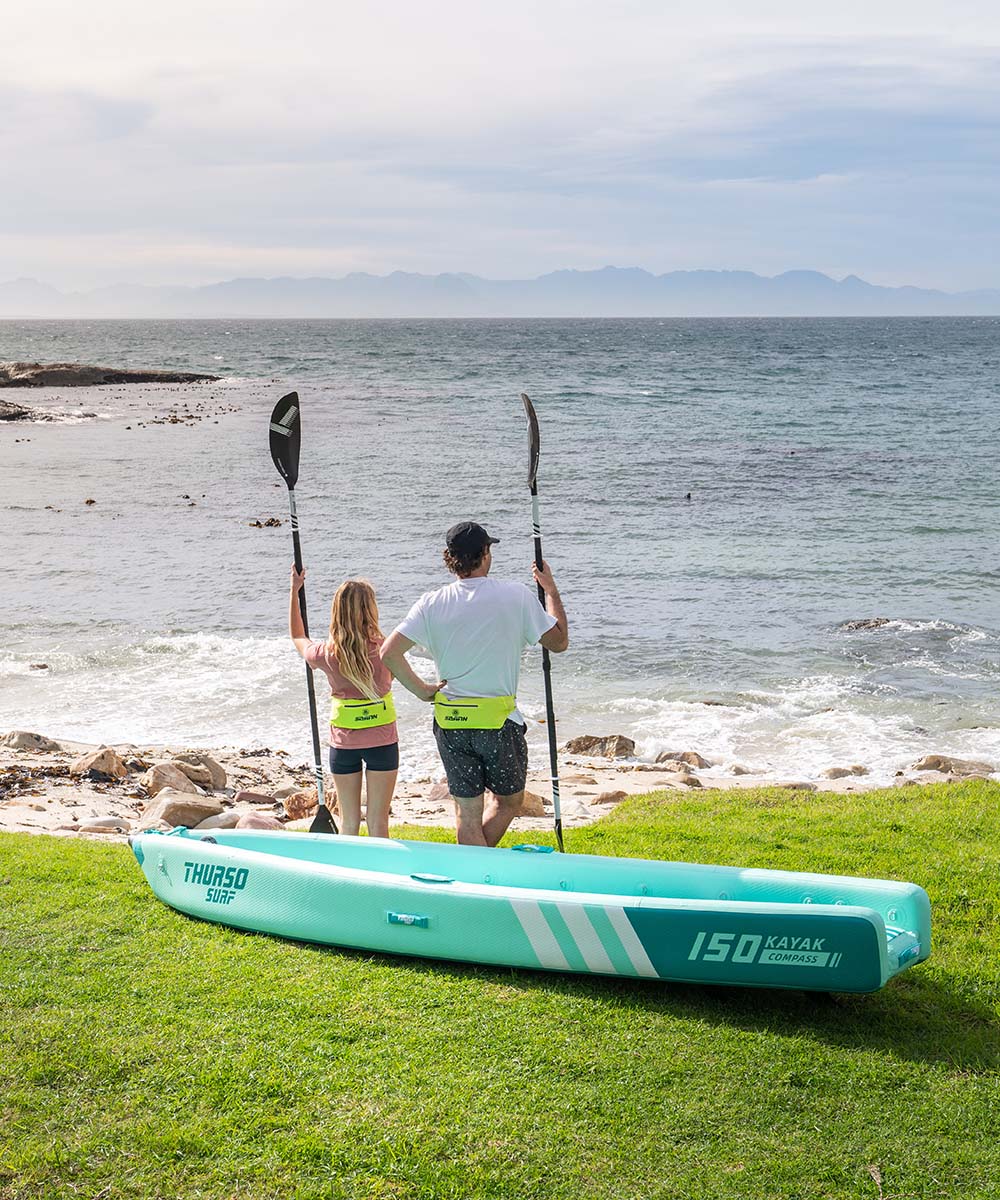
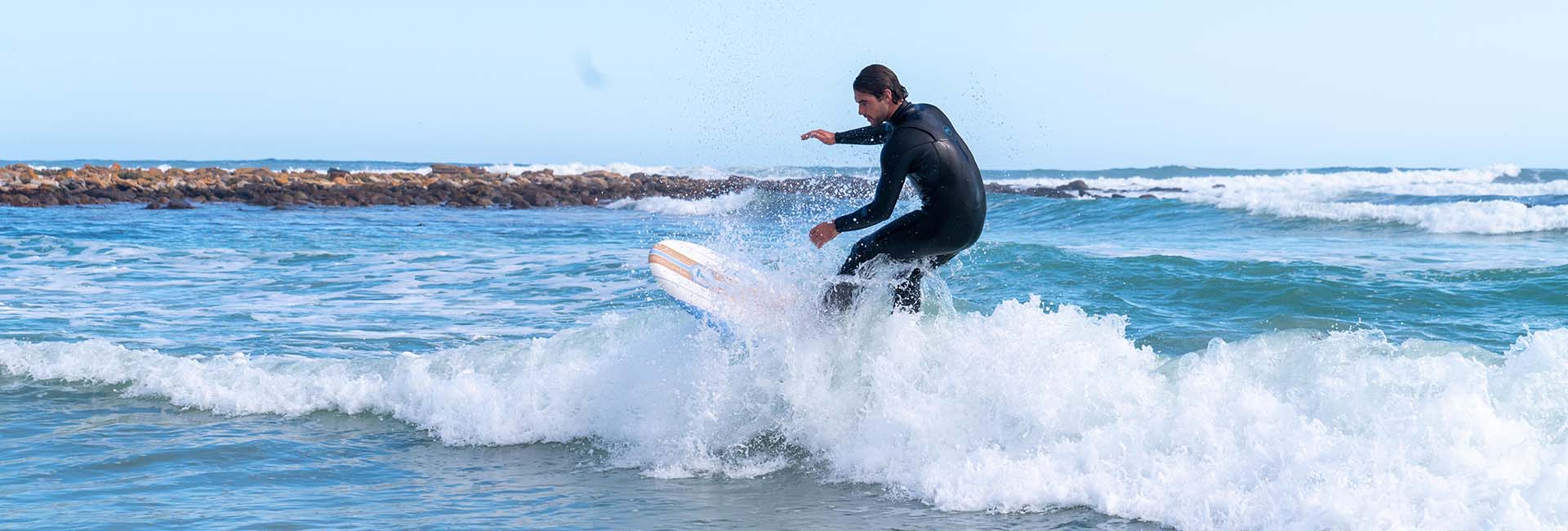
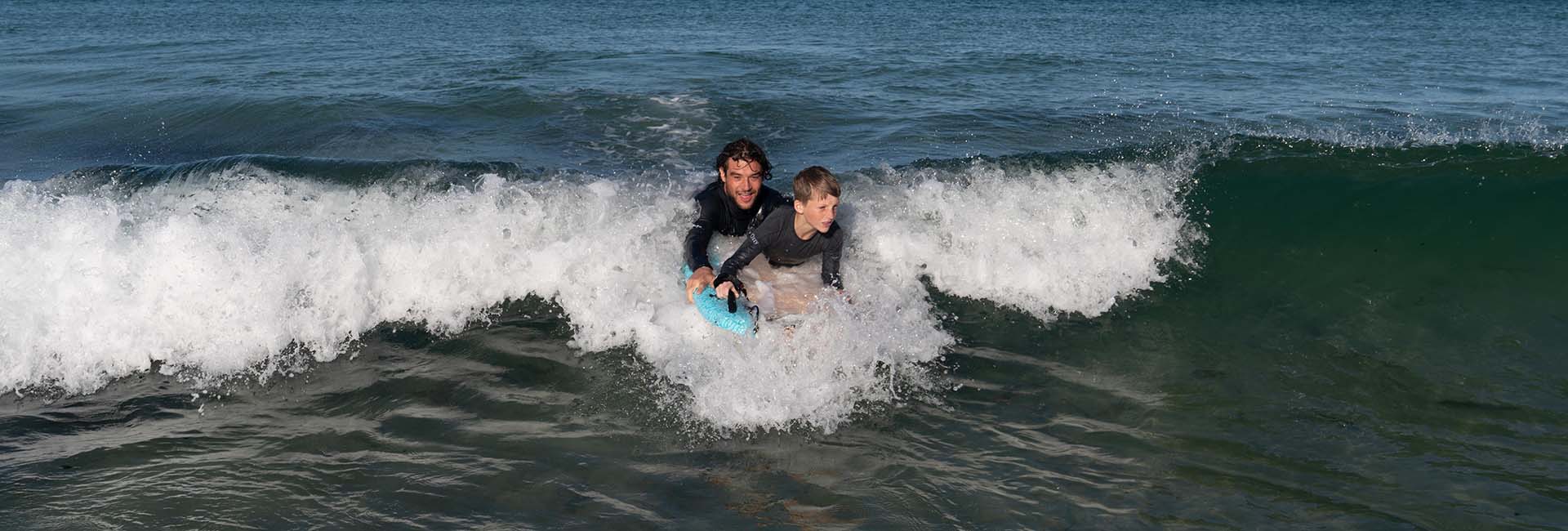
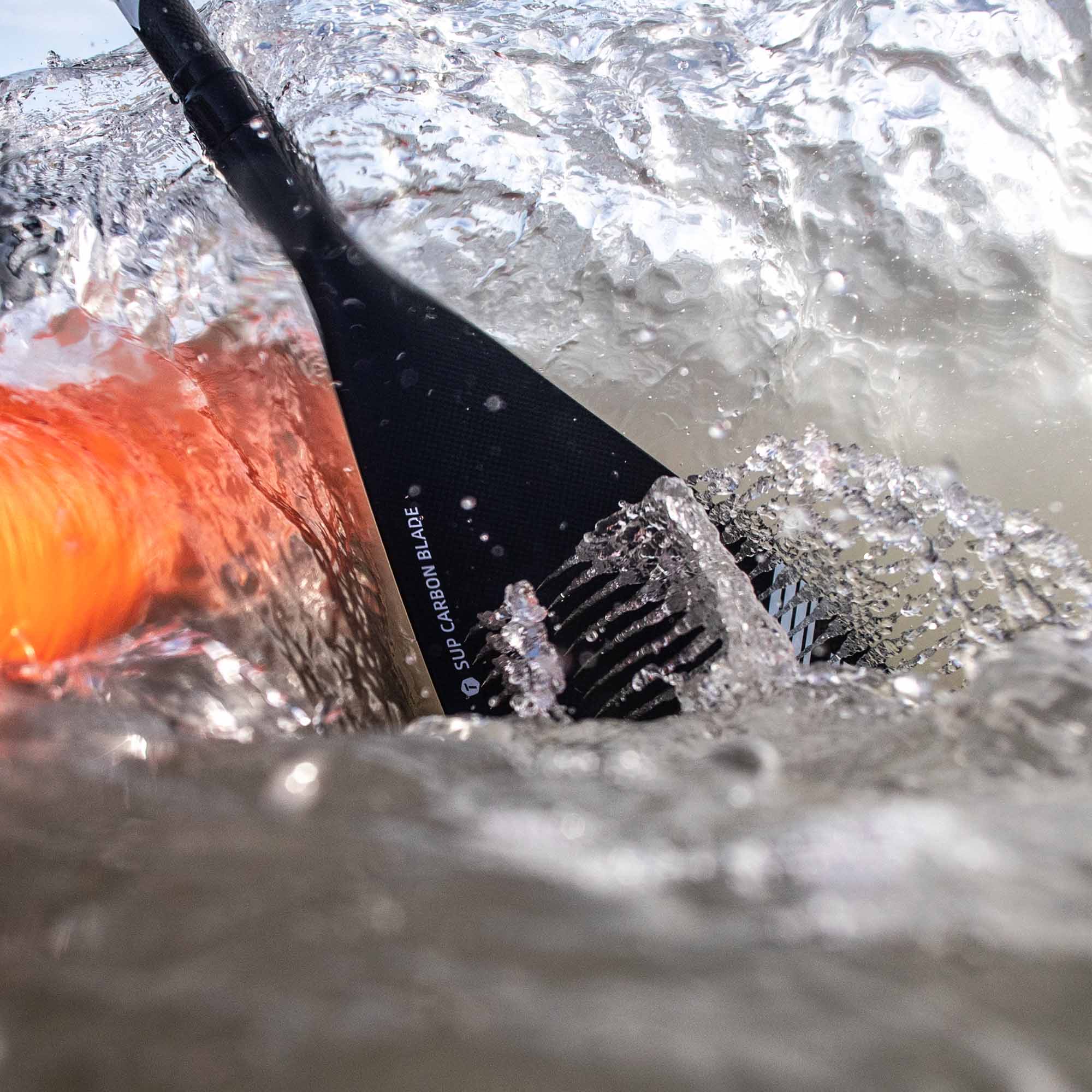
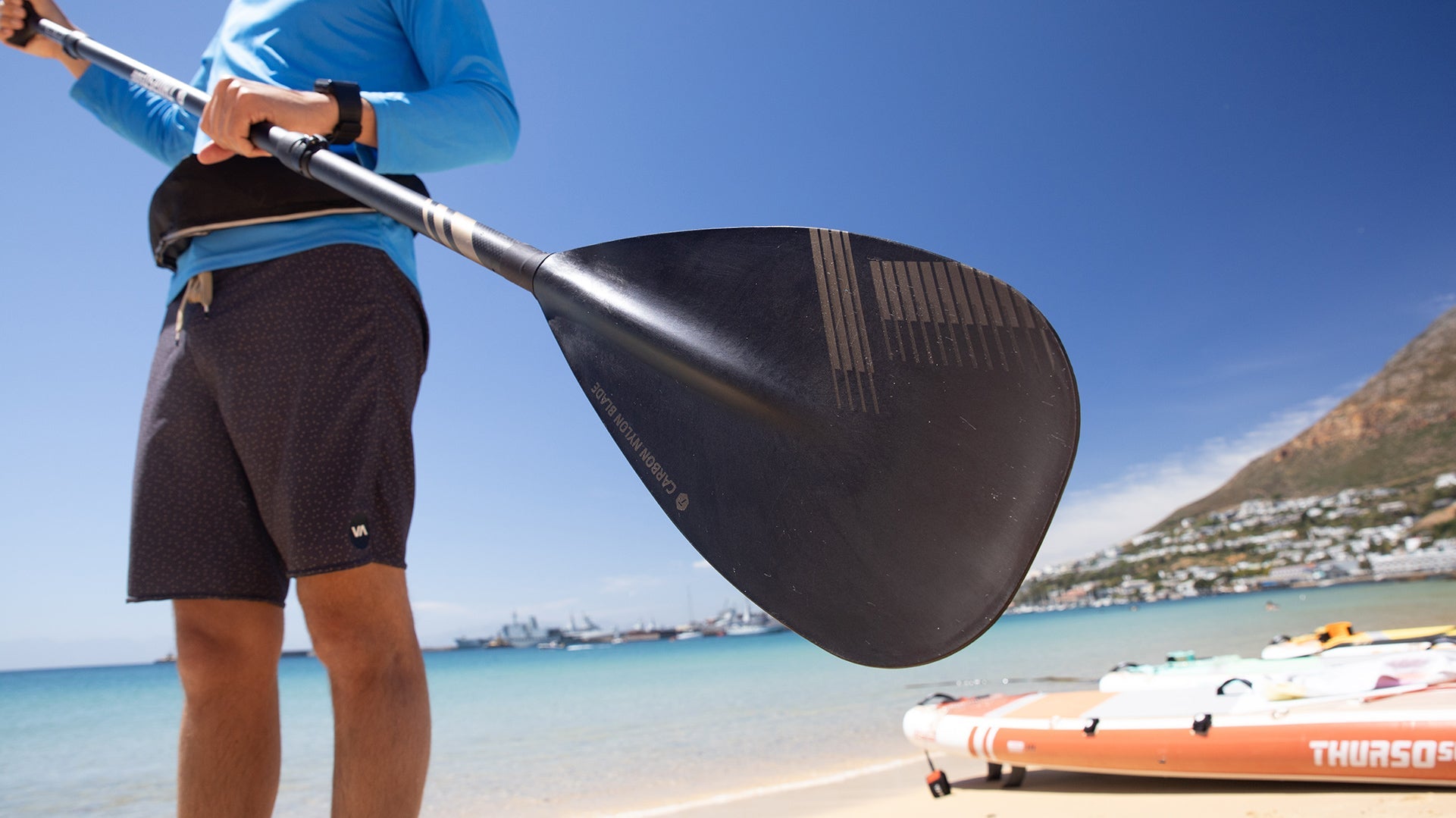
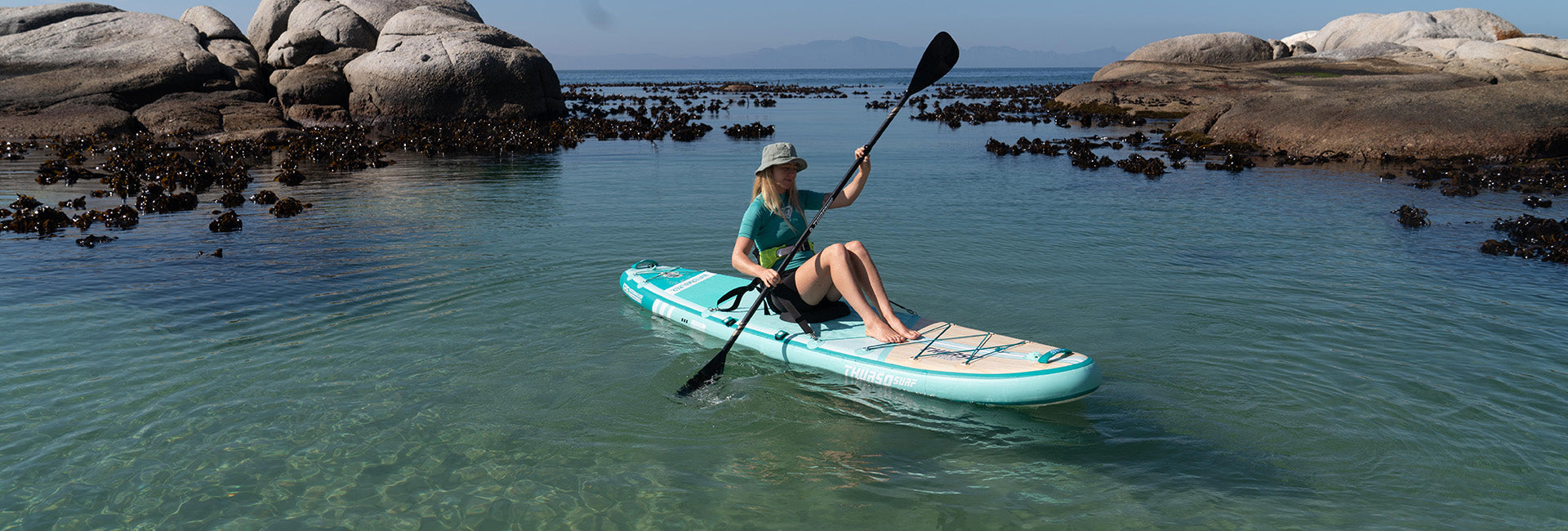

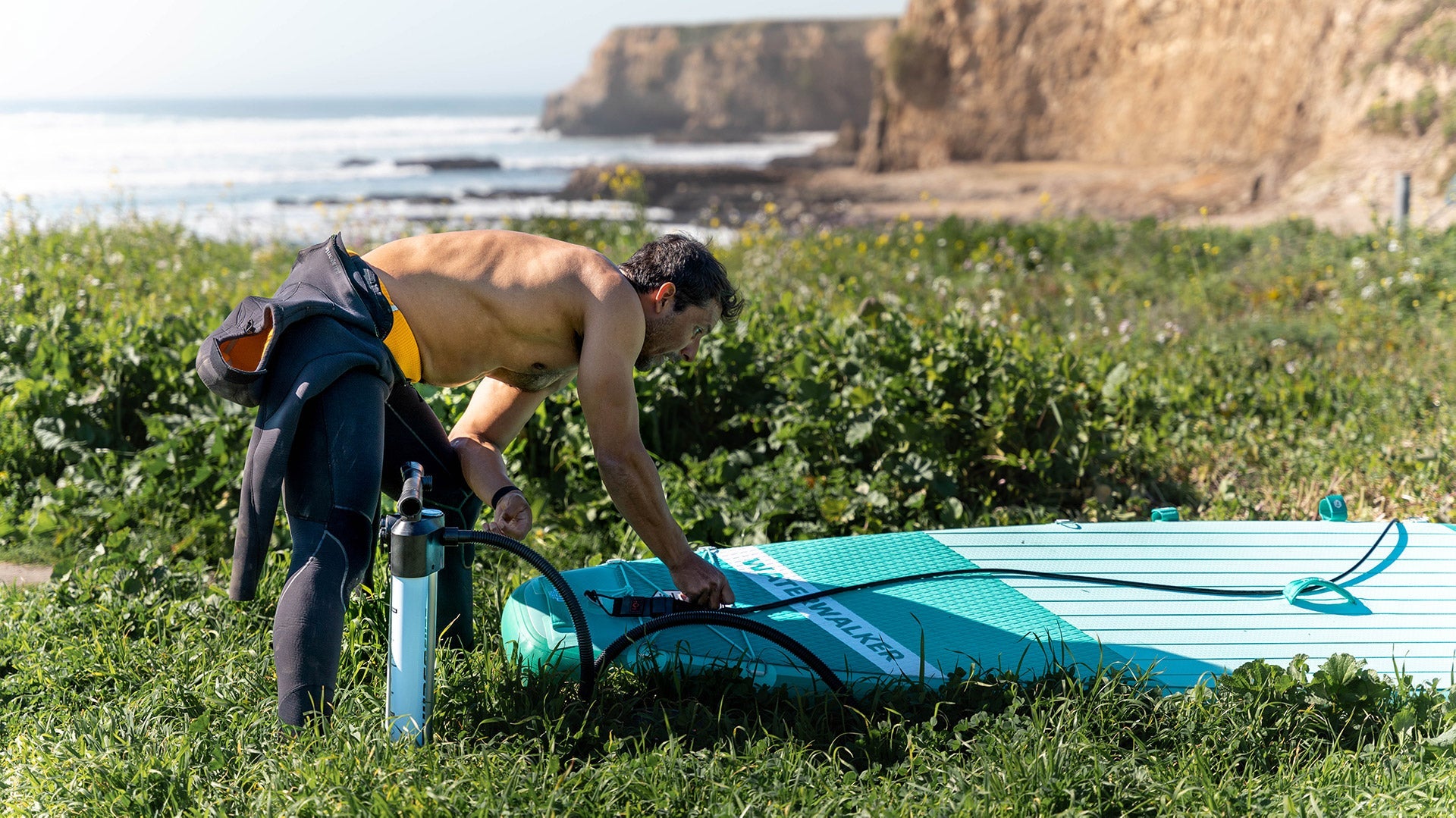
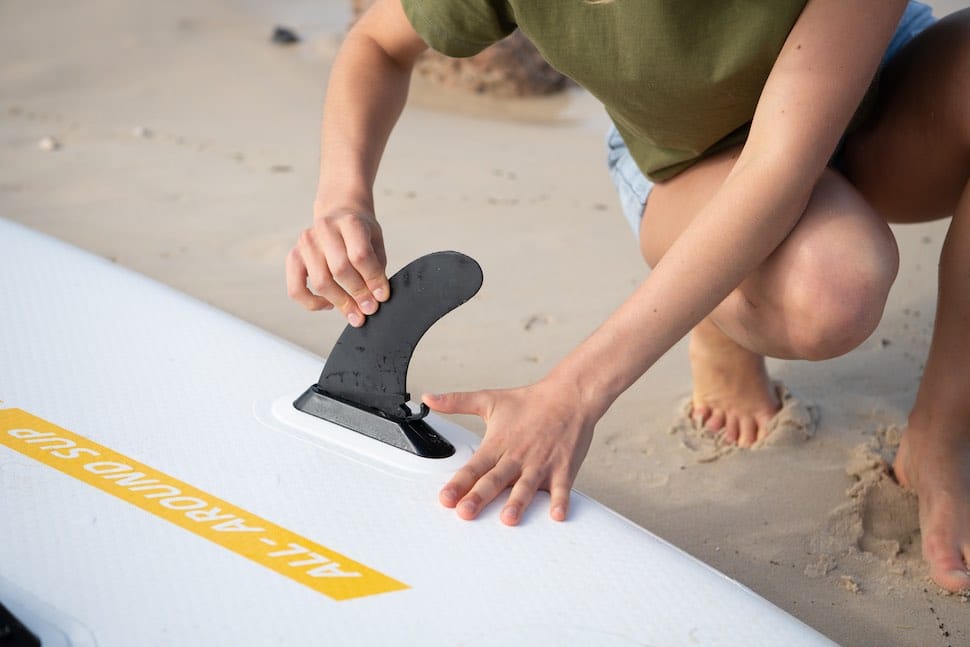
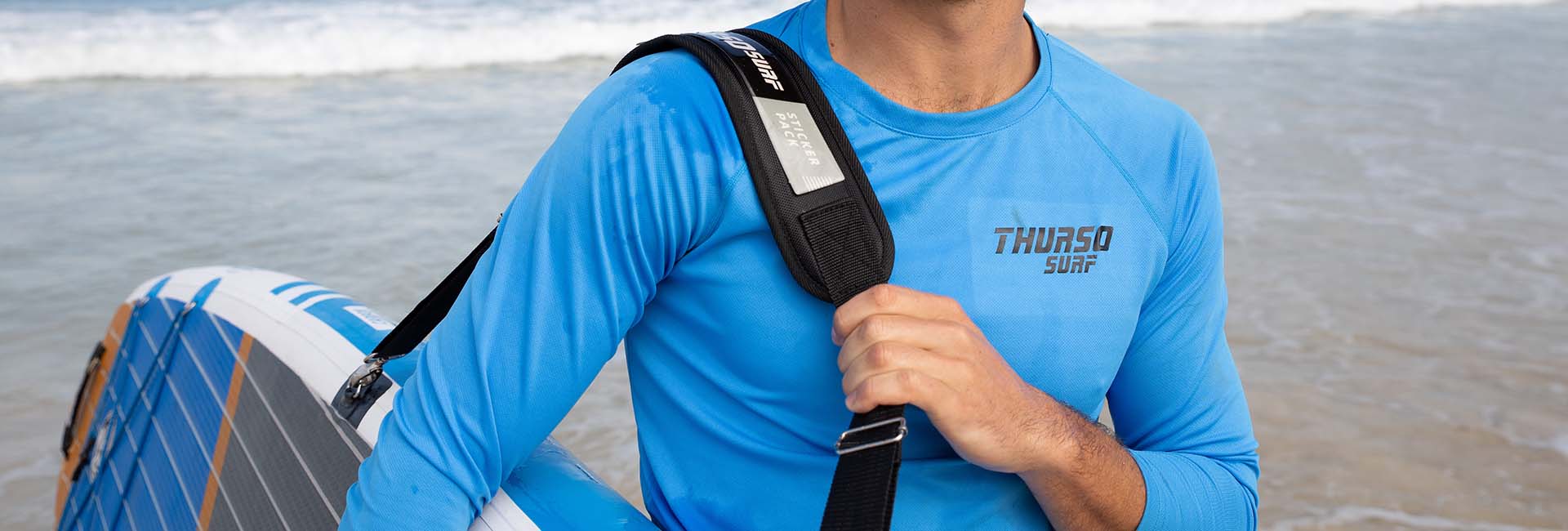



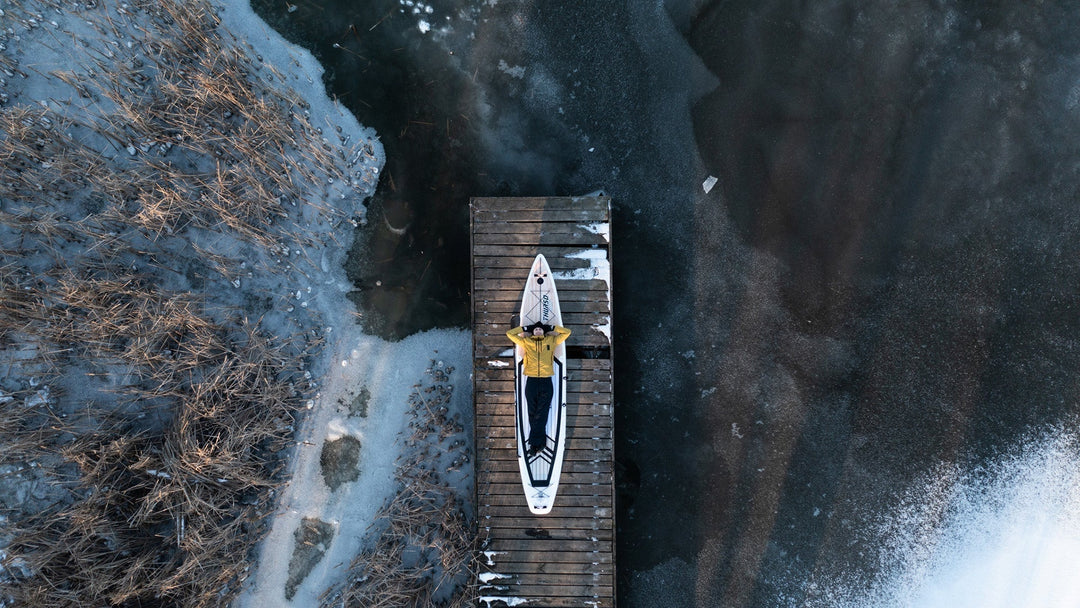
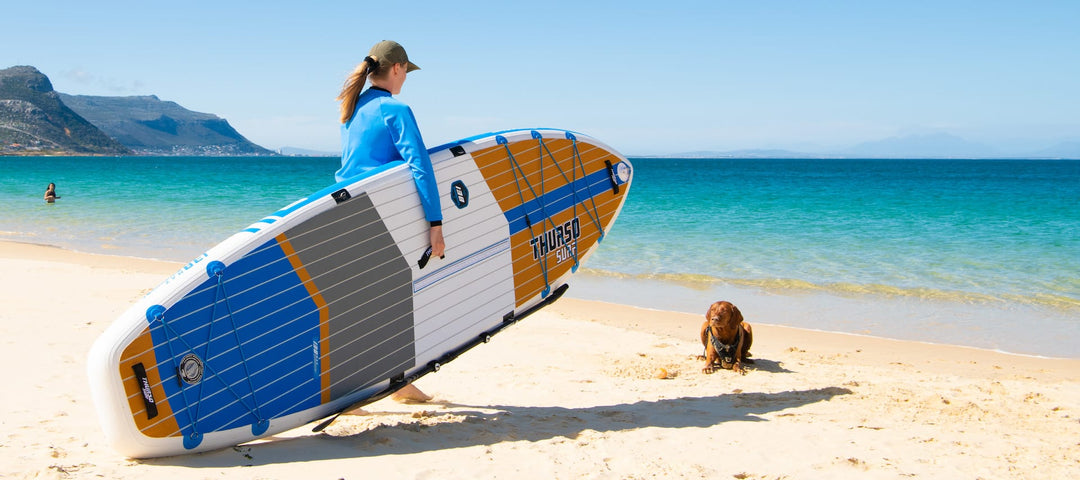
Leave a comment